Field Theory and Practice: Kansat in Russia 2016

Last week, on the border of the Moscow and Tver regions, near the village of Kalinkino, rockets rushed into the sky, quadrocopters were patrolling the air, and children and adults running around the field with fanatical eyes, with laptops and homemade VHF antennas in their hands. The Taldom district hosted the final of the annual competition of school and student teams “Kansat in Russia”.

The competition is intended to spark the eyes of future space explorers, to give the first experience of developing technology, allows children to feel like a general designer, programmer, radio technician, project manager of an automatic device. Unfortunately, rockets do not reach space, but the functions of the launched kansats correspond to many spacecraft: they collect data on pressure, temperature, radiation, take photographs, navigational calculations, transmit data by radio to a ground receiving station or mobile point.
')
Organized by Kansat in Russia , the Aerospace Engineering Laboratory of Moscow State University, employees of the Institute of Nuclear Physics of Moscow State University, the private space company Dauria Aerospace participate in the project, now funded by the Innopraktika Foundation, supported by Roscosmos and ORKK. The purpose of the competition is to prepare a new generation of space engineers through practical activities that are as close as possible to the tasks that are being solved by adult developers of space technology.

The developed “kansaty” are 350-gram or 0.5-kilogram soda cans corresponding to the size of the soda cans. They are assembled from standard design kits, which can be upgraded and modified at the discretion and capabilities of the team, but not more than $ 512. Someone puts a video camera there, someone has an infrared sensor, someone has an improved system for reducing or soft landing. Restrictions are only on the launch of living beings - such experiments are prohibited for ethical reasons.

The development experience is gained not only by soldering contacts and programming, but also in the “paper” part: before practical launches, it is required to provide an interim report on the work done, substantiate the selected technical solutions, and protect the project before the rather harsh technical commission. Such NTS - scientific and technical councils - are held in the semifinals, in the Kansat winter session , and in the summer, just before the launch itself. If the team and the unit are not ready for start-up, then it is necessary either to complete the preparation in the last minutes, or to go the distance and postpone for the next year.
Since 2015, the competition began to expand, quadrocopters and rockets were added to the kansats. Now teams have even more opportunities to realize their bold technical ideas.
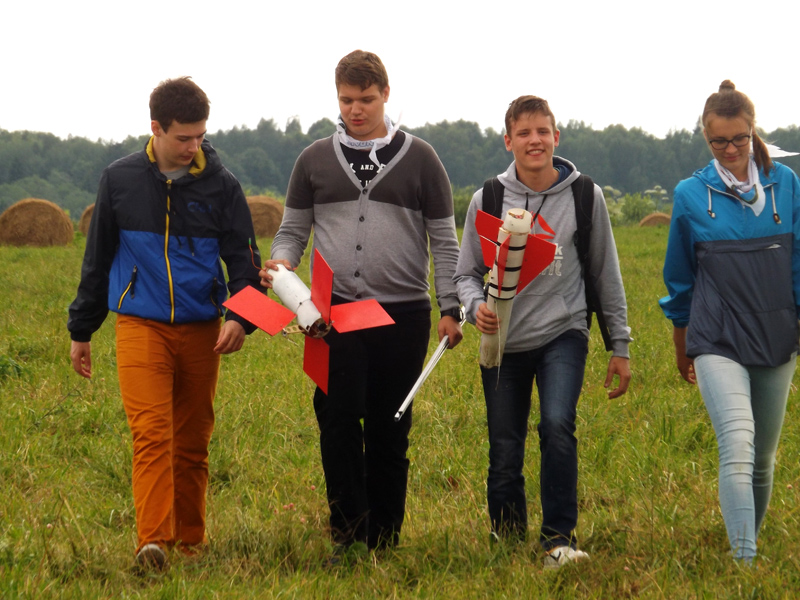
This summer, none of the students' missile development flew as planned. The engines refused to operate, and when triggered they tore a rocket or carried it away along a steep ballistic trajectory directed to the center of the Earth. Even a successful start did not guarantee success, because it was necessary to ensure a soft landing.
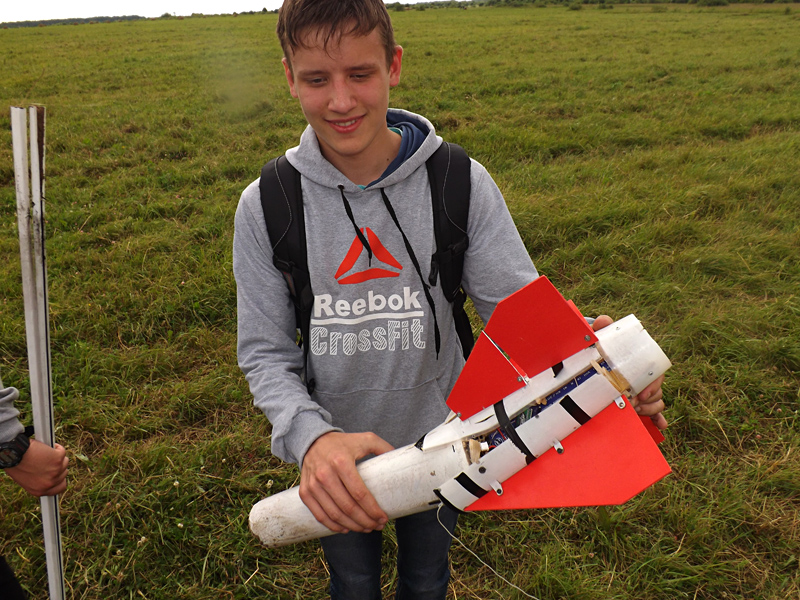
Quadcopters competed not only in the ability to fly, but also in the intelligence of the autopilot. Drones were supposed to fly along a pre-programmed route, and along the trajectory to monitor the terrain with an infrared sensor.

The task was to register the source of heat and designate it on a map of the area. In the role of a high-temperature radiation source, there was a bucket with burning engine oil, but in practice its temperature was not enough for the drones to pay attention to it.
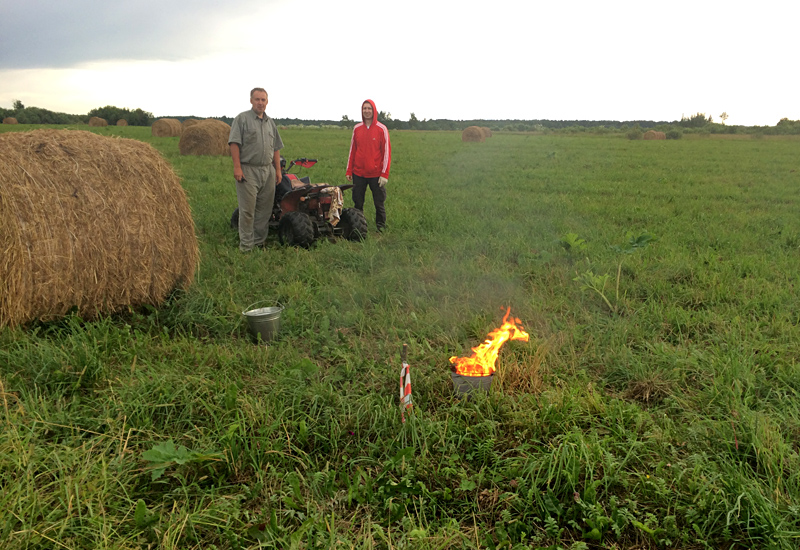
The main drama unfolded around the Kansat rocket launches. Here the organizers took care of the participants, providing their missiles, which guaranteed to rush into the sky and carried out the landing of the vehicle at the highest point of the trajectory.
Although the starts were not always successful either, but after repair work, the problem was solved and no one and nothing was harmed.

However, some rocket problems were given even by experienced rocket makers with difficulty.
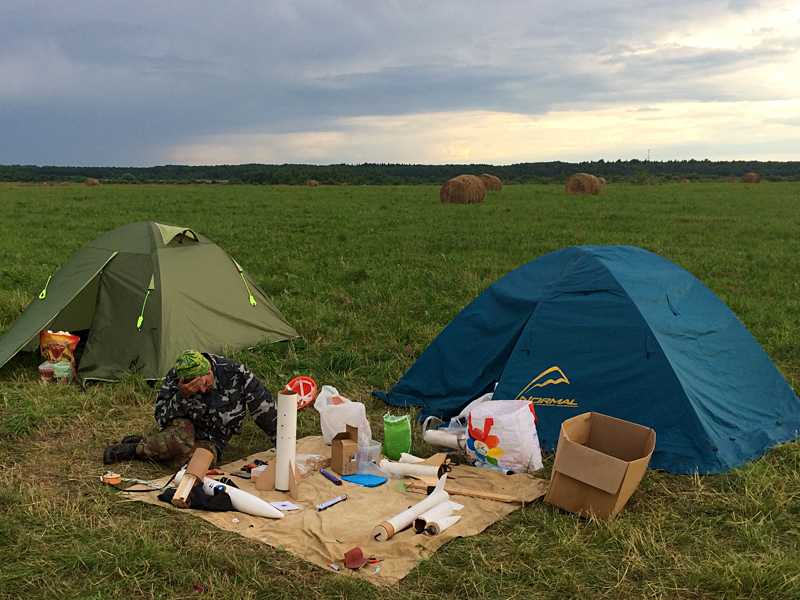
But school kansats allowed their developers to survive the widest range of problems and emotions that quite serious manufacturers of space technology may encounter. There were software errors, technical failures, manufacturing faults, design flaws, and mass-size characteristics violations ... Problems were solved according to the capabilities and availability of technical teams.
Somewhere the Hollywood method helped - with the help of electrical tape.
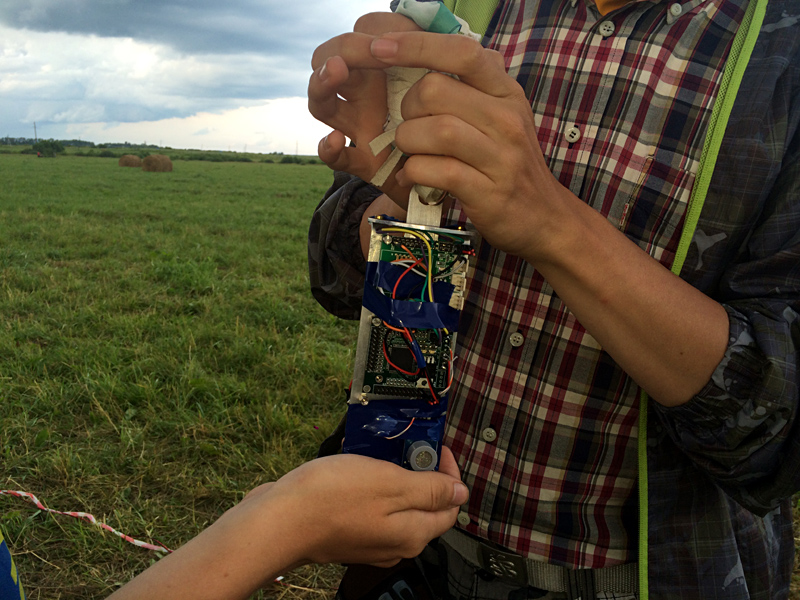
Someone saved battery replacement.
Someone could not cope with the task of preparing to launch in one day, but night brainstorming made it possible to detect a malfunction or software bug, eliminate it and make a launch the next day.

Going beyond the dimensions of the product led to a launch ban - the rocket head fairing simply refused to close. The problem was solved radically - cut off half of the exhaust parachute belt.

The launch took place, but the solution of one problem gave rise to another - the braking parachute could not get out and the "satellite" crashed into the ground at full speed. Although a rather low fall rate and soft arable land kept it intact. The team kept the machine, but lost hope for a prize.
And only a few teams were able to solve all the problems before the start, see the flight of their apparatus, land it gently and receive telemetry.


Although not everyone was able to go home with prizes and first places, but each team learned what the long months of preparation, development of an almost spacecraft, selection of instrumentation, protection in front of scientific and technical advice, writing a control program, testing, preparing to launch , seeing the rocket in the sky, full of hope for success, running across a summer field through swarms of horseflies, and, regardless of the result, a detailed debriefing with an analysis of correct and erroneous actions.
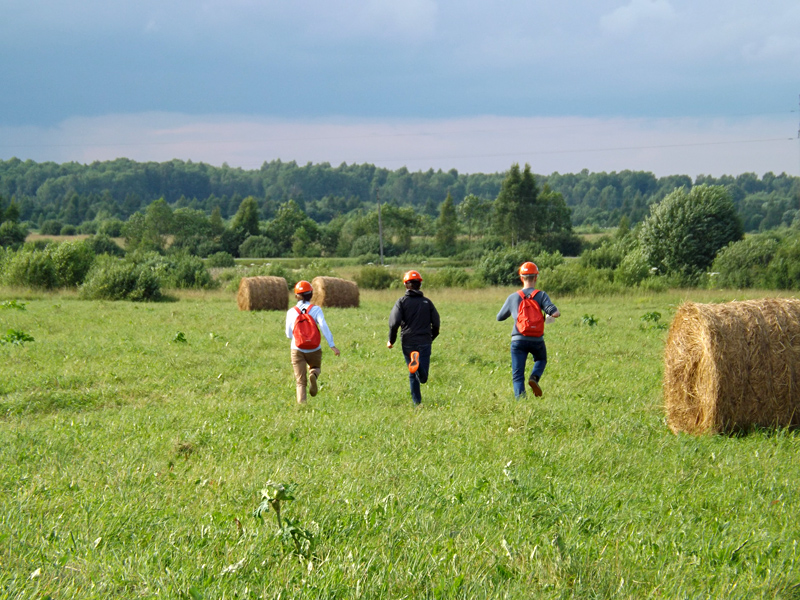
According to statistics from Kansat in Russia, about 60% of competition participants go to space engineers and scientists in order to increase and use the experience gained during school years. However, after such a rich start, many years will pass when graduate students are allowed to develop real spacecraft. Therefore, it is no coincidence that Kansat already includes tests not only at the school level, but also at the student level. In particular, in 2016, the student team prepared an apparatus for a stratospheric launch on a ball, which flew several hundred kilometers.

Photo: nearspace.ru
I think over time, “Kansat in Russia” will come to the development of real spacecraft, such as CubeSat , for example. If there were opportunities, these guys would have enough enthusiasm.

Any Russian-speaking team, regardless of their nationality, can declare their participation in the Kansat in Russia competition. It is only necessary to find 15 thousand rubles. to pay the entrance fee to the team, and funds to travel to Moscow twice a year. Applications are accepted until November 1.
Source: https://habr.com/ru/post/396071/
All Articles